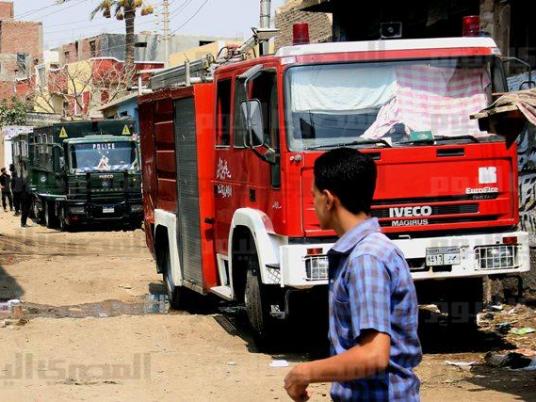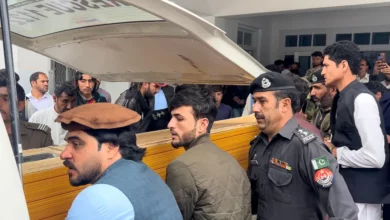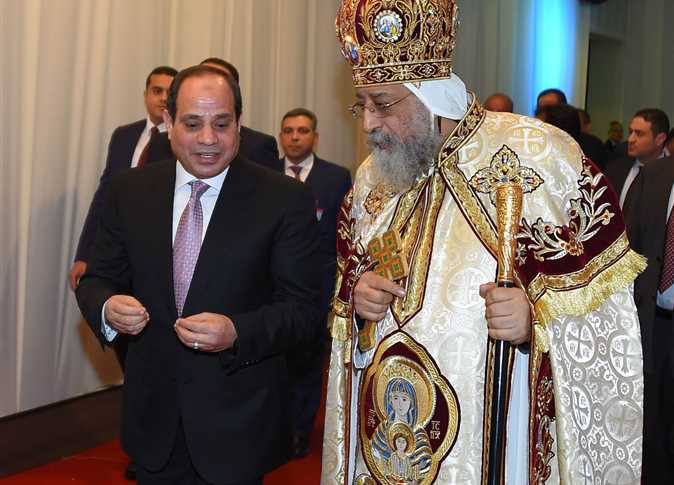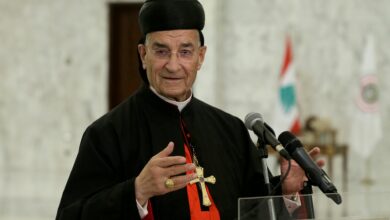
After five days of sectarian violence, 12 armored vehicles besiege a street no wider than 300 meters and no longer than 600 meters. Mar Girgis Church — the only church in the village of Dahshur, Giza — stands on that street.
A fight broke out two weeks ago between a Coptic and a Muslim family, and one Muslim who intervened to end the brawl was killed. As the violence developed over the next days, 16 people were injured, including 10 policemen. The violence and resulting tensions caused 20 big Coptic families composed of 120 smaller families to be displaced out of the village, which has a Muslim majority.
Although many initially dismissed the sectarian overtones, the conflict soon began to take on those aspects, and the state’s response remains unsatisfactory for many.
The story
On 27 July, Hany Youssef, 28, a Copt who works ironing clothes, and four of his family members clashed with a Muslim family after Youssef burned a shirt that belonged to that Muslim family. Moaz Hasaballah, 26, came out of a nearby mosque to break up the fight when Youssef allegedly hurled a Molotov cocktail that fell on Hasaballah by mistake and burned 70 percent of his body.
Some of the residents of the village then broke into Youssef’s house and damaged his property. Then about a thousand people gathered outside the Mar Girgis Church and attempted to storm it, but security and some senior members of the older families in the village prevented them from doing so.
Badrasheen prosecution detained Youssef and the four members of his family implicated in the incident for 15 days pending investigations over charges of premeditated murder.
Attempts to break into the church continued over the next three days.
On 31 July, residents of the village learned that Moaz died and his body arrived for burial.
The burial scene reignited the crisis and several Muslim residents torched six homes, a number of shops and two warehouses for fizzy drinks and alcoholic beverages that belonged to the village’s Copts.
Some Muslim residents tried again to break into the church, but Central Security Forces dispersed them with tear gas and chased them off. The clashes left 10 central security conscripts and six village residents injured. According to investigations, 20 to 30 residents incited the clashes, 11 of whom have been arrested so far.
The origins
Muslim residents of the village said sectarian incidents are a novelty to the village. They claimed the recent advent of some Coptic families who behaved inappropriately in the past few years provoked such sectarian clashes.
“We inspected Youssef’s home and found several Molotov cocktails. It seems he was prepared for a possible fight,” village resident Mahmoud Omar, 23, said.
“Hany and his family harmed all remaining Copts in the village with their misbehavior. They never respected our traditions in Ramadan. Youssef used to play songs at the times of prayers and that provoked us.”
Omar added that Muslim residents were surprised to see all Coptic residents of the village moving out of it before Moaz’s death was announced. In a suspicious tone, he said all the consequent violence took place in their absence.
Ibrahim Mansy, the Dahshur mayor, said relations between Muslims and Copts in the village were peaceful until 2000, when Priest Takla was appointed to lead the Mar Girgis Church.
“Since Priest Takla was appointed, relations between Muslims and Copts deteriorated. He attracted Copts from neighboring villages and other places whose behavior differed from ours,” he said. “Among those who came was Hany. They purchased plots of land and built homes. Their number grew from four to 20 big families.”
Mansy accused Priest Takla of being an agent for the dissolved state security apparatus, saying that attracting so many Copts into the village was part of a scheme to stir up sectarian clashes, as a means to threaten village residents when they oppose state security.
“State security has declined from its heyday and therefore it is normal for Takla to go down as well. What proves my point is the departure of those families from the village with the breakout of the first incident after the fall of that ferocious apparatus,” he added.
Takla, meanwhile, rejected Mansy’s accusations. In a phone interview with Egypt Independent, Takla said he has not attracted any Copts into the village and that Copts left the village after some Muslims threatened to burn their homes if Moaz died.
“Any citizen has the right to buy land and to build on it as long as that does not violate the law, which in turn is not supposed to discriminate between Muslims and Christians,” said Takla, affirming that the Coptic residents would soon return to the village.
Takla declined to say where the village Copts had gone, but added that most of them took shelter in the homes of their relatives in neighboring villages or in Cairo.
Mansy believes Coptic residents left the village because they do not have the courage to stay after the incident. He said he is not opposed to their return provided they respect the conditions currently being set out by security leadership in the Giza Security Directorate and the governorate, which would ensure such incidents are not repeated.
Mohamed Hasaballah, Moaz’s father, meanwhile, insists on taking revenge for his son’s death.
“I will have to take the life of one of [the Copts], as they did to us,” he said.
The state
It wasn’t until 4 August that President Mohamed Morsy assigned Giza Governor Ali Abdel Rahman to form a committee to assess the damage resulting from the incident and to work on achieving reconciliation between the residents of the village.
The Shura Council on Thursday announced the formation of an eight-member committee to work toward reconciliation, rather than setting up one for fact-finding purposes.
On his first visit after the events to the village on Friday, Abdel Rahman said they are nearing reconciliation and that Moaz’s family chose to go to court.
Ishaq Saad, who works with the Egyptian Initiative for Personal Rights, criticized how the state addressed the incident.
“What happened to the Copts in Dahshur is forced eviction that entrenches the idea of group punishment that exists in our culture,” he said. “Is it logical for 120 families to depart over the mistake of one?”
Even though the president’s office issued a statement on 4 August in which it said that had received official reports that stated that the village Copts were not forcibly evicted, a security source from the Giza Security Department told Al-Masry Al-Youm on 1 August that Coptic residents of the village were asked to leave to maintain order, particularly with rumors that Moaz was soon going to be announced dead.
Takla said he received two phone calls, one from the mayor of Dahshur and another from the Giza bishop, both of whom asked that the Copts to leave the village.
“Every time a sectarian incident takes place, only the Copts are punished by either being arrested or evicted on the pretext of maintaining public security, disregarding the principle of equality of rights and punishment,” Saad said.
An ongoing crisis
The incident in Dahshur is the sixth sectarian incident to rock the country, home to an estimated 10 percent Coptic population, since the breakout of the 25 January revolution. It is the first incident since the Muslim Brotherhood’s Mohamed Morsy rose to the presidency.
Qalyubiya saw the first spark of sectarian violence after the 25 January revolution when a church was burned and a Muslim and Coptic man were killed in the village of Atfeeh over a love affair between a Muslim man and a Coptic woman. A few days later, Cairo’s Moqattam neighborhood saw an aftershock. Thirteen people were killed and another 140 people injured over the rumored burning of a mosque in the area.
Less than two months later, another sectarian incident broke out in Imbaba, one of the most populous neighborhoods in Giza. Twelve people died and 230 others were injured and a church was set on fire. The incident was also triggered by a love affair between a Muslim man and a Coptic woman who some extremist Muslim residents alleged had converted to Islam and was being hidden by Copts.
The sectarian incident in Imbaba was the only one in which both Muslims and Copts were punished. However, in June the Emergency Supreme State Security Court in Giza ruled to stop the review of the case until a ruling is issued on the constitutionality of the Emergency Law, and 48 suspects were subsequently released.
The Edfu Misdemeanor Court sent Priest Macarios of the Marinab Church to six months in prison over church construction violations. In September, the Marinab Church in Edfu, Aswan was destroyed by some Muslims who said the church rose higher than the law permitted.
Even though no victims fell in that incident, it fueled the anger of several Coptic activists who decided to organize a march to the Maspero state TV building on 9 October to protest the burning and destruction of churches and the fact that those implicated in most of those incidents were not brought to trial.
The march came to a dramatic end after the protesters clashed with army forces who were securing the building, killing 28 people, including one soldier, and injuring 300.
Hany Henry, a psychology professor at the American University in Cairo, said he believes sectarian violence has a class element whereby feelings of marginalization and societal persecution are important triggers.
“In those societies, the people suffer from inhibition due to poverty and the difficulty of living conditions, which causes some of them to vent their anger on the weaker elements, or Copts in the case of those predominantly Muslim societies,” Henry said.
“The problem lies with the deficient culture of citizenship among us Egyptians. The government implements Band-Aid solutions to the crisis, which [then] keeps reigniting, much to its discontent,” he added.




